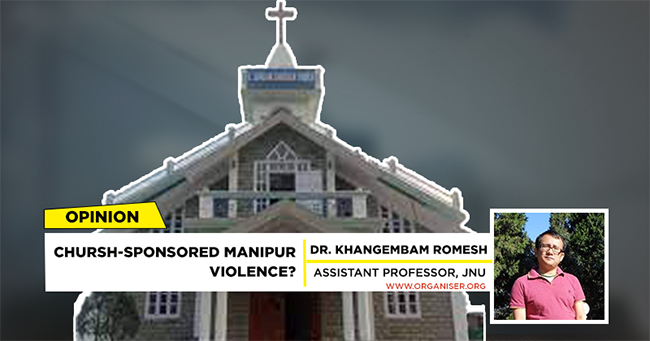Manipur is a melting pot of religions. Meitei’s Sanamahism and Kabui’s Tingkao Ragwang Chapriak are the oldest belief systems in Manipur. The newest religion that reached Manipur was Christianity during British rule after 1891. The attempt to spread Christian missionaries was as early as 1814 when the translation of a Christian literature book into Manipuri began. But Christian missionaries could not enter Manipur and start work because of unfavourable situations in Manipur. After 1891, there were attempts to start Christian missionary work among Meiteis. Meiteis were predominantly Hindus. There were two waves of Christian missions that attempted to enter Manipur. The first was American Baptist Mission. Its evangelist William Pettigrew of Scotland was the first Christian missionary to enter Manipur from the north in January 1894. He started missionary activities among the Tangkhul people in 1891. He became the pioneer Christian missionary who worked among Nagas. The second was the Thado Kuki Pioneer Mission, formed in 1910. It became the North East India General Mission in 1923 that entered Manipur from the south and spread Christianity among Chin-Kuki- Mizo groups. Mr Watkin Roberts was its leader. They all belonged to the protestant church. After independence, various denominations of Christianity reached Manipur, such as Catholic, Baptist, Presbyterian, Seventh-day Adventists, etc. At the same time, money was pouring in to sponsor missionary works, mainly to convert Meiteis. Kuki missionaries played an important role, particularly from the late 1970s. Kuki’s spreading Christianity among Meiteis had created multiple negative impacts on the region. They spread fanaticism and hate against other religions. Thus, it either exasperated religious intolerance with non-Christian Meiteis or attacked and uprooted the indigeneity of Meitei converts, such as their mythology or cosmology, original belief, practices, customs, collective memories, etc. They converted Meiteis for multiple purposes; (a) to uproot Meitei’s indigeneity and erase in the long run any cultural difference between the indigenous (Meitei) and immigrants (Kuki), (b) to win over Meitei converts as an ally in Kuki’s communal agenda, (c) to divide Meitei into religious sections.
Kuki churches are not purely spiritual institutions to spread peace and love. The churches are communally coloured and effectively used to serve that purpose. The churches are political institutions with communal agendas in disguise. Kuki churches are instrumental in consolidating Kuki’s dominance over weaker communities. Churches encouraged the psychological subjection of various vulnerable tribes to accept Kuki’s dictates. Churches are prepared to deal with emergency circumstances. Some Kuki churches in Imphal have underground rooms to be used as bunkers. The spread of religious fanaticism and intolerance is one of their strategies to invoke communal hatred. The churches are largely responsible for encouraging their followers to carry out violent attacks on Meitei/Hindu religious shrines and symbols in the past and in the on-going unrest.



















Comments